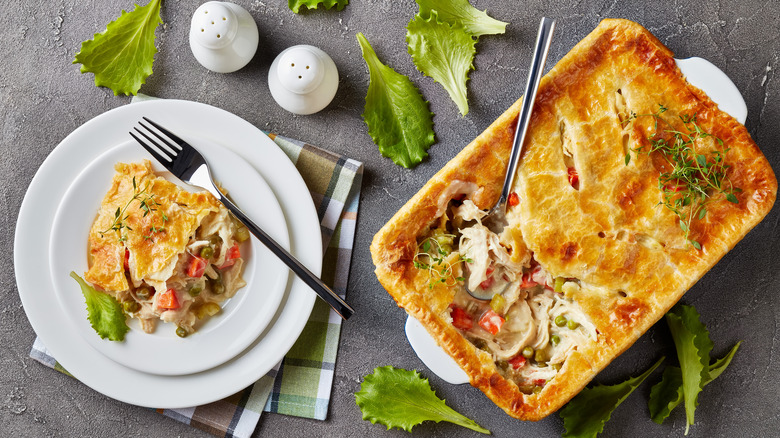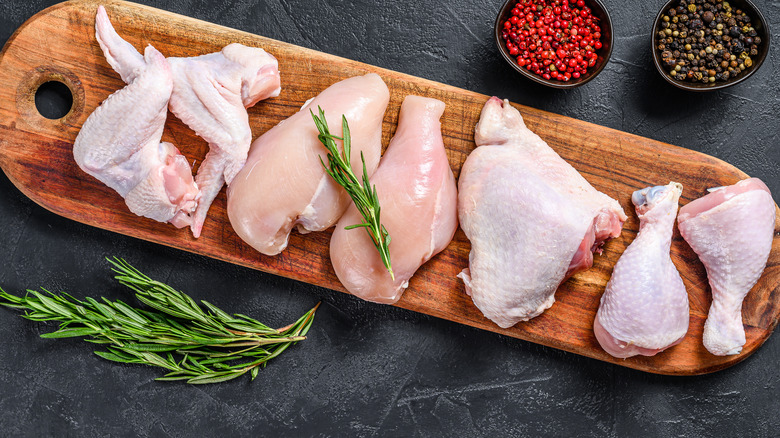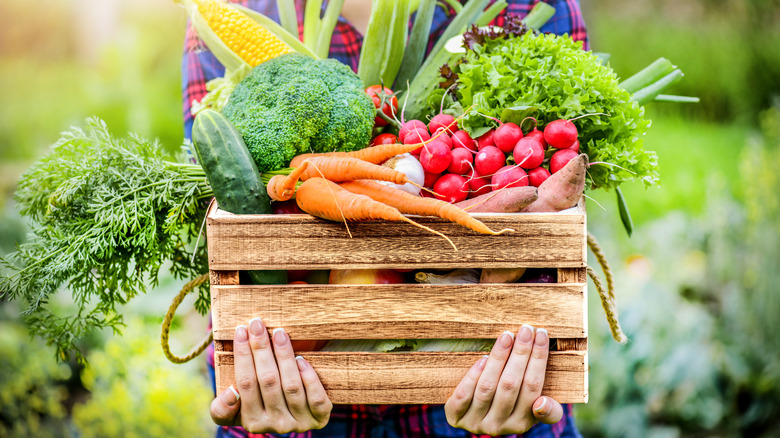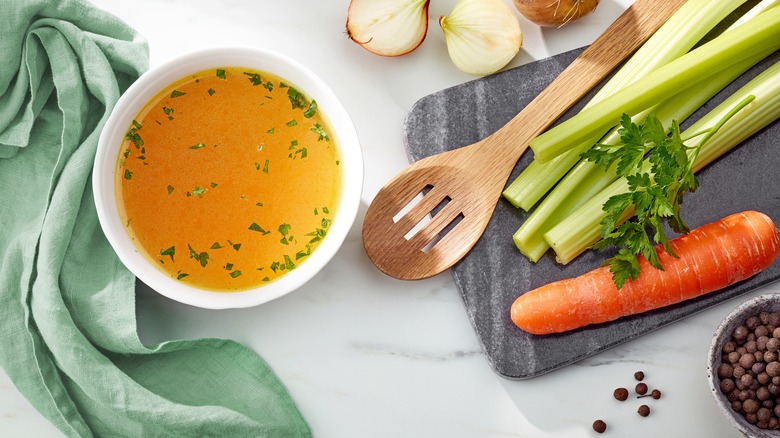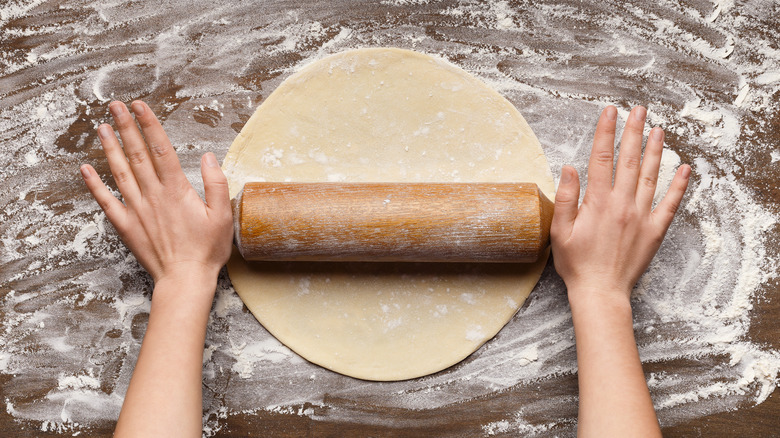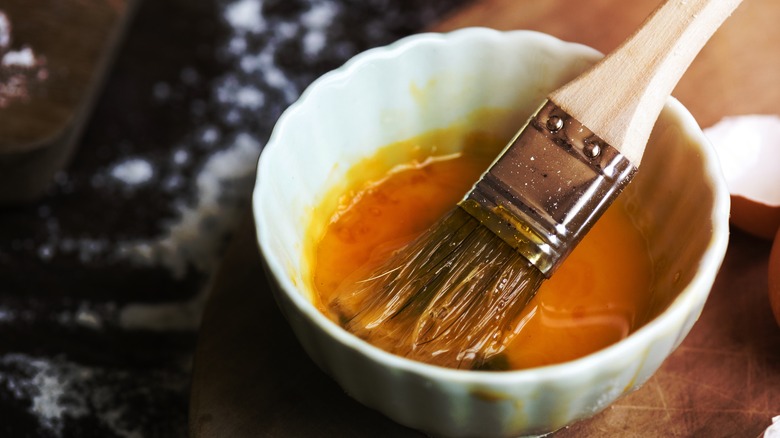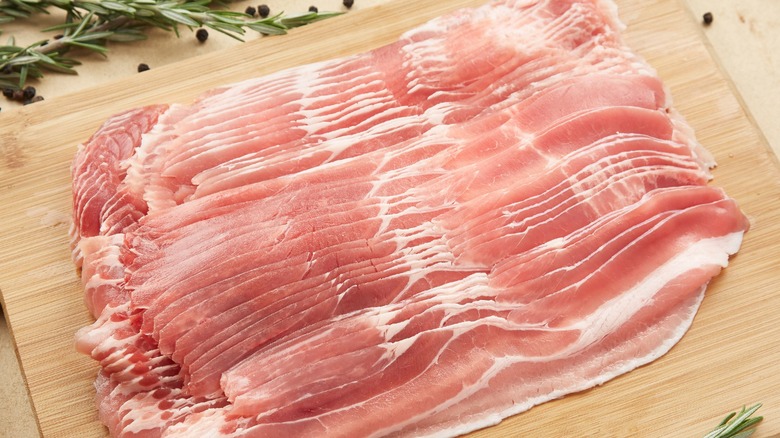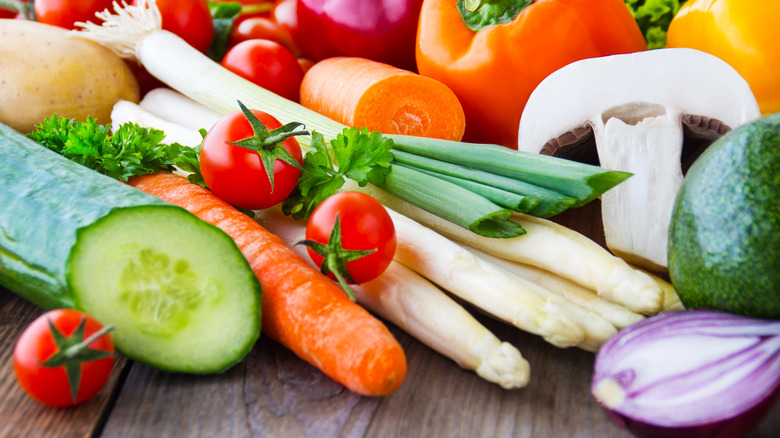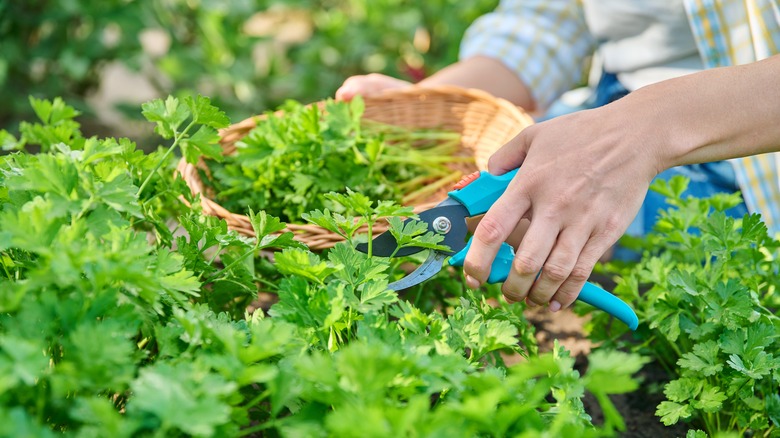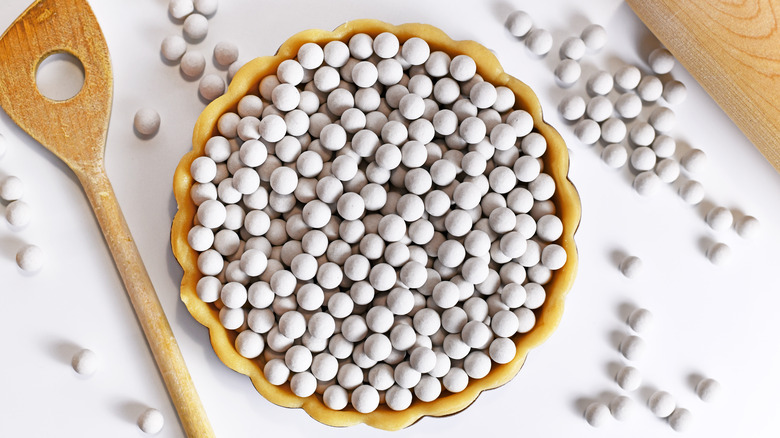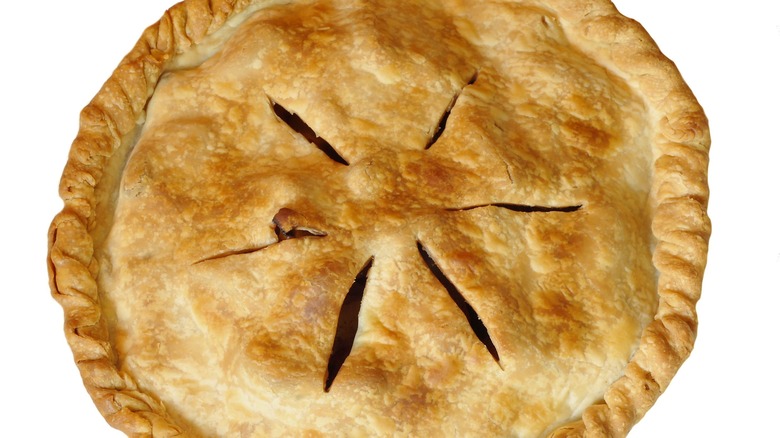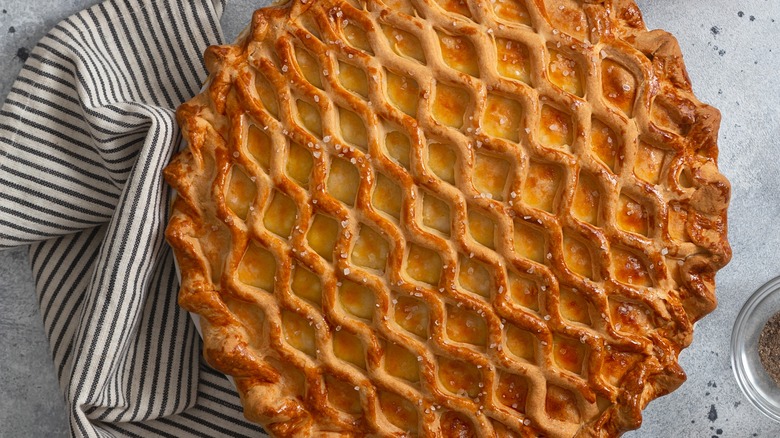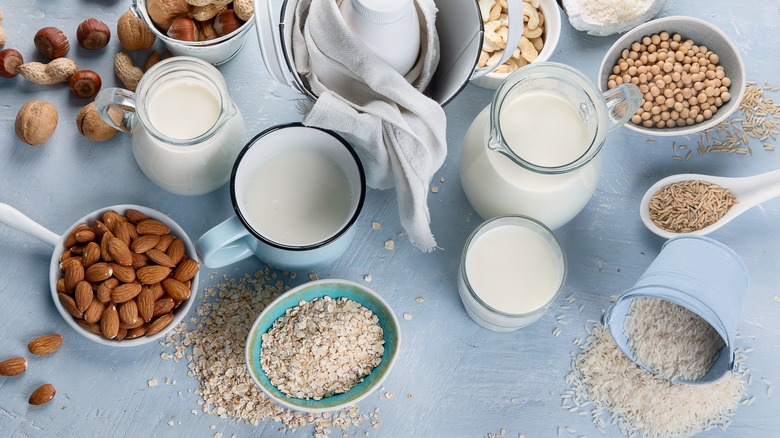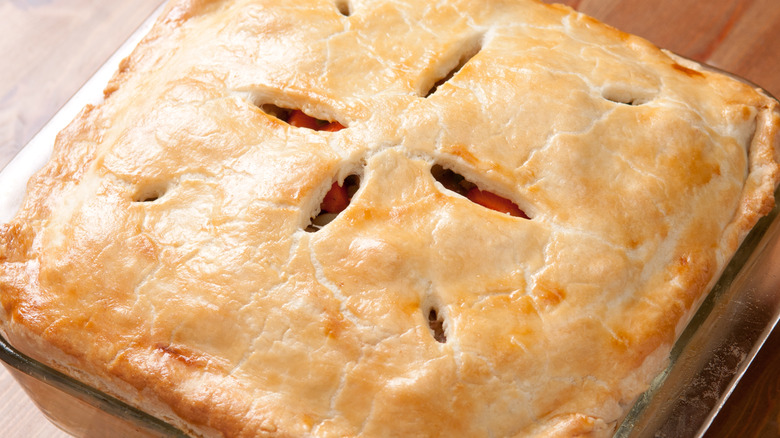13 Tips You Need When Making Chicken Pot Pie At Home
Creating a homemade chicken pot pie is a satisfying journey that results in a deliciously comforting meal. This classic dish is a family favorite in many homes, and with so many ways to adapt it, it is definitely worth making from scratch. From the cut of chicken to the type of vegetables, making your own pot pie allows you to tailor every detail to suit your own tastes and create a unique masterpiece.
Some home cooks may find the prospect of a homemade pie daunting, but each individual component is manageable, and you don't have to make everything from scratch the first time around. Each time you make it, you can upgrade one aspect of your pie until you finally have a culinary showpiece you will be proud to share with loved ones.
Join us as we explore the many ways to upgrade your chicken pot pie, from making the crust yourself to boosting the flavor with bacon or fresh herbs. Following these tips along with your culinary instincts will help create the perfect midweek comfort meal that you can enjoy with the whole family.
1. Choosing a cut of meat
One of the first questions you need to consider before you make your chicken pot pie is which type of chicken to use – breast or thigh? You will find recipes championing both options, and each cut has its benefits, so it comes down to personal preference. Chicken breast tends to be the more popular choice, as most people assume it is the better cut since it is leaner and more tender. Though it is high in protein, it can also dry out very easily, meaning that care needs to be taken when cooking with it.
Chicken thighs, on the other hand, have a deeper flavor due to their higher fat content. They generally take longer to cook than breast, but they are much more forgiving and are rarely spoiled by overcooking. Chicken thighs also have the advantage of being significantly cheaper than breast, as they are not considered as premium a cut.
Ultimately, the choice is up to you. If you are looking for a filling that feels light and slightly healthier, you should opt for chicken breast, taking care not to overcook it. For a more succulent, rich pie, chicken thighs should do the trick. Just be sure to find a recipe specific to the cut of meat you choose, as the cooking times could be very different, especially if the thighs still have the bones in.
2. Focus on quality ingredients
The secret to a great pot pie depends on more than just the cut of chicken you use, it also relies on high-quality ingredients. Since chicken is the star of the show, it pays to put a bit of thought into the quality of the meat.
Organic chicken is an excellent choice if you want to improve both the flavor and the health benefits of the dish. Organic meat has been associated with a higher quality of life for more than just the farmed animal, with a recent French study showing that those who choose organic meat over conventionally farmed regularly have "a significant reduction in the risk of cancer." (via Journal of the American Medical Association.) This applies not just to meat but to all produce, meaning that sourcing the vegetables for your pie organically can be of benefit, too.
The downside to organic produce is the price, since farmers need to hold an organic certificate, which can be pricey. If this is not an option, try heading to your local farmers' market instead. You can often pick up uncertified organic produce here, but even if not, local produce will have fewer additions, such as preservatives since it does not have to travel across the country or beyond. You will also have the reassurance that you can speak directly to the farmer about the produce and are supporting local businesses at the same time. You may even be able to negotiate for a lower price, something that is unlikely at your local Walmart.
3. Use a homemade stock
The filling of a chicken pot pie is what makes this classic hearty dish so comforting, and the stock is an important part of getting it right. While stock cubes and bouillon cubes offer a quick and easy option, if you can afford the time to make your own stock from scratch, you absolutely should.
Homemade chicken stock has a flavor that cannot be beaten with a store-bought version. Simmering chicken bones with a selection of vegetables and herbs creates a depth of flavor that will make your pie filling rich and complex. The gelatin from the bones will also improve the texture of the stock, which in turn will give a more indulgent sauce.
You may think that you don't have time to make a chicken stock from scratch, but if you are roasting your chicken before adding it to the pie, you are more than halfway there already. You simply have to add the roasted bones to a large pot of water with a selection of veggies and herbs and simmer for a number of hours. Using this method, the stock is virtually free since you have already cooked the bones, and you can feel less guilty about wasting the carcass of the bird. You can always freeze any leftover stock, meaning you have a delicious, healthy homemade version to hand whenever you want to make any stews or pies in the future.
4. Shop bought vs homemade pastry
In your quest for the ultimate chicken pot pie, you may wonder whether to make your pastry from scratch. While homemade pastry can be time-consuming, it may be worth it for the reward of perfect flaky, buttery pastry that's as fresh as it gets.
Store-bought pastry is clearly much more convenient and is a perfectly good option if time is of the essence. You can even get pre-rolled pastry that will literally only take seconds to drape across your pie. However, making your own pastry will allow you to create a beautiful handmade crust that you can adapt to suit your pie, adding more butter or a selection of herbs to suit the flavors of the dish. Pot pies are generally made with puff pastry, which thankfully is a bit more forgiving than its shortcrust sibling, and you can enjoy folding in butter to create the distinct layers.
Choosing whether to make your own pastry will come down to how much time and patience you have. There is no point rushing the job and ending up with a sub-par crust on your pie, especially when there are many good-quality store options available. However, if you have some time to spare, making your own pastry will give you a sense of pride in your baking skills and will raise your chicken pot pie to a delicious new level.
5. Egg wash for a golden crust
If there is one seemingly simple step in the preparation of your chicken pot pie that you don't want to skip, it is treating the pastry to an egg wash. This quick addition to your pie can make it look professional and give it a beautiful shine.
An egg wash is generally made by beating an egg with water, milk, or cream. It is brushed onto the top of the pie before baking and acts like a thin glaze, creating a golden pastry top. It is easily applied by simply painting on the egg mixture with a pastry brush, taking care to apply a light layer, as too much can soak into the pastry and make it heavy.
As well as giving a golden color to your pastry, it can be helpful if you are planning to decorate the top of your pie, as seeds or any other decoration will stick better to the egg than directly to the pastry. The improvement in both the look and flavor of the pie after applying an egg wash means this is an essential step and should not be overlooked.
6. Add some bacon
While a pot pie made with chicken as the only meat would definitely be delicious, adding some additional flavors is a great way to add complexity to the dish. The perfect meat to complement the chicken is pork, and in particular, bacon. With its unique, smoky taste, bacon will lift the flavor of the pie filling and enhance the meaty chicken flavor. Its high fat content will also add a rich texture that lean chicken cannot achieve.
To get the most out of this addition, fry the bacon first in a frying pan and save the fat to cook the vegetables in later. Getting a good crust on the bacon will give you a crispy texture in the finished pie. When it comes to assembling the pie, scatter the bacon pieces through the filling to ensure the umami flavor is present throughout the whole dish. To mix up your filling, you can try different types of pork cuts, such as pancetta and lardons. The different flavors and fat content will change the balance of the pie each time. Since all of these products are high in salt, be sure to adjust your seasoning depending on how much you use.
7. Mix up the vegetables
Making a chicken pot pie from scratch gives you control over what ingredients you include, meaning you can be creative when it comes to the vegetables. Adding veg to a pie not only provides some extra nutrition but can also create a depth of flavor depending on what you choose. Mushrooms are a popular choice alongside the chicken, as their deep, meaty flavor matches the protein well.
Since the rest of your filling has a soft and silky texture, you could try adding some al dente vegetables to give it some crunch. Green beans, bell peppers, or baby corn could all work well. Using a wide variety means that every forkful will offer a different experience in both flavor and texture.
If you are making chicken pie regularly throughout the year, focus on adding seasonal vegetables. Winter could mean root veg such as carrots and parsnips, whereas a spring pie could feature asparagus or even baby potatoes to save you from serving them separately. Using seasonal produce will also increase the freshness and nutritional value of the vegetables, meaning you can be reassured that your comforting midweek meal is still packing a healthy punch.
8. Add some fresh herbs
As with most dishes, your chicken pot pie will benefit hugely from proper seasoning, and that is not restricted to salt and pepper. Adding fresh herbs to the filling will give an added layer of complexity to the dish, and you can alter the flavor to suit your own preferences.
Rosemary and thyme are both classic herbs that complement chicken, and they will work well in this dish. They can be cooked with the vegetables before baking or added to the pie as you assemble it. The earthy flavor will beautifully complement the creamy filling and lift the flavor of the chicken. Parsley is a perfect match for creamy sauces and will give a lighter note to the filling. Add it as you assemble the pie to keep the flavor fresh.
Using a mix of tender and woody herbs will create contrasting flavors within the pie and give it an exciting twist. Any herbs can be used, so experiment with your favorites to find the best balance. Remember if you are using bacon to be very careful and taste the filling before adding salt.
9. Blind bake the crust
Many recipes for chicken pot pie call for blind baking of the pie crust, and if you are new to baking, this may seem a little daunting. Blind baking simply means baking the crust on its own for a short while before adding the filling and then baking the entire pie. This will help to create a crisp bottom to the pie without it becoming soggy from the wet filling.
To blind-bake your pie, add the pastry to the pie dish, then cover it with parchment paper. You can then add either dried beans or special pie weights to weigh down the pastry and prevent it from puffing up. You then want to part cook it according to the recipe, then leave it to cool completely before adding the filling.
Though this may seem like an unnecessary step that will make the process of cooking a chicken pie even longer, blind baking is a crucial technique in making a delicious pie with the right texture. It will be worth the extra time when you remove your perfectly crispy pie from the oven, and the bottom is as golden and flaky as the top.
10. Cut some vents in the pie
Cutting a vent in the top of your chicken pot pie doesn't just make it look professional (though it does,) but it also serves an important function as the pie cooks in the oven. As the pie bakes, the filling generates steam, which can build up under the pastry, leading to a soggy crust that will fall apart when you attempt to serve it. In some cases, the build-up of steam could cause the filling to burst through the crust. Since the best pies have a very thin crust, it doesn't take much pressure for them to cave in and allow the filling to escape.
To vent the pie, cut several slits in the top layer of pastry in a circular pattern using a sharp knife. These small holes will be enough to allow the steam to escape, preventing the collapse of your beautiful pie in the oven. The holes will also allow the pie to cook consistently as heat will be distributed evenly, reducing the chance of the crust overcooking by the time the filling is done.
11. Decorate your pie
If this is one of your first attempts at a homemade pie, you may want to get it straight into the oven as soon as you have put the top crust on, and cross your fingers that it will come out of the oven in one piece. However, if you are feeling adventurous, why not be creative and add some decoration to the top of the pie once you are finished?
To decorate your pie, you don't need an art degree, as a few careful markings with a fork can take your pastry to another level. Pushing the fork down evenly around the outside of the pie will give it an elegant look in no time at all, while creating leaves from some leftover pastry can be easily achieved, too. Creating a lattice instead of a solid pastry top is another great way to make your pie stand out in a short space of time.
If you are cooking the pie for someone else, you can personalize it by cutting out letters from extra pastry and spelling out a message across the top. However you decide to decorate your pie, you will be surprised to see how pretty you can make it without any specialized pastry skills.
12. Adapting the recipe for dietary restrictions
While traditional chicken pot pie recipes contain both dairy and gluten, there are easy modifications that can be made to adapt the dish for those with dietary restrictions. With a few tweaks, you can create an alternative version that will be just as tasty as the original.
Both the crust and the filling of a traditional chicken pie will contain gluten, so you will need to find a gluten-free flour to make both the pastry and the roux. While many alternative flours exist, such as almond and buckwheat, they often need a different proportion of wet ingredients to make the dough. The best flour for a 1 to 1 ratio with wheat flour is brown rice flour. By using rice flour, you can simply substitute it for wheat flour in the same amounts for both the pastry and filling.
To make your pie dairy-free, you will need to replace the butter in the pastry and the cream or milk in the filling. There are a variety of dairy-free milk substitutes available, and most of them will work well, their sweet flavor making little impact on the savory taste of the pie. However, if you want the milk that has the mildest flavor, soy is the best option. Plant 'butter' made from vegetable oil will make a good substitute in the pastry. These straightforward modifications mean that your whole family can enjoy their chicken pie together without having to make alternative dishes for those unable to eat gluten or dairy.
13. Storing your pie
In the highly unlikely event that you have any of your delicious chicken pot pie left over, it is important to store it correctly to keep it fresh and prevent it from spoiling. Chicken dishes, in particular, can harbor bacteria, so refrigerating it quickly is crucial. The USDA calls temperatures between 40 and 140 degrees Fahrenheit the 'danger zone' as bacteria can double in 20 minutes within this range. So, as soon as the pie has cooled, you should cover it and move it to the fridge, ideally in an airtight container. Properly covered, the pie will keep in the fridge for three to four days.
If you are unlikely to eat the rest of the pie within that time frame, you can freeze it instead. Either wrap it tightly in a freezer-proof bag or place it in a suitable container. Eat within three months for optimum freshness.
To reheat your chicken pot pie, thaw it completely if frozen, then reheat in the oven until the center is piping hot. This should take around 20-30 minutes at 350 degrees Fahrenheit. You may find that the crust is not quite as crisp as when the pie was fresh, but it will still be delicious!

